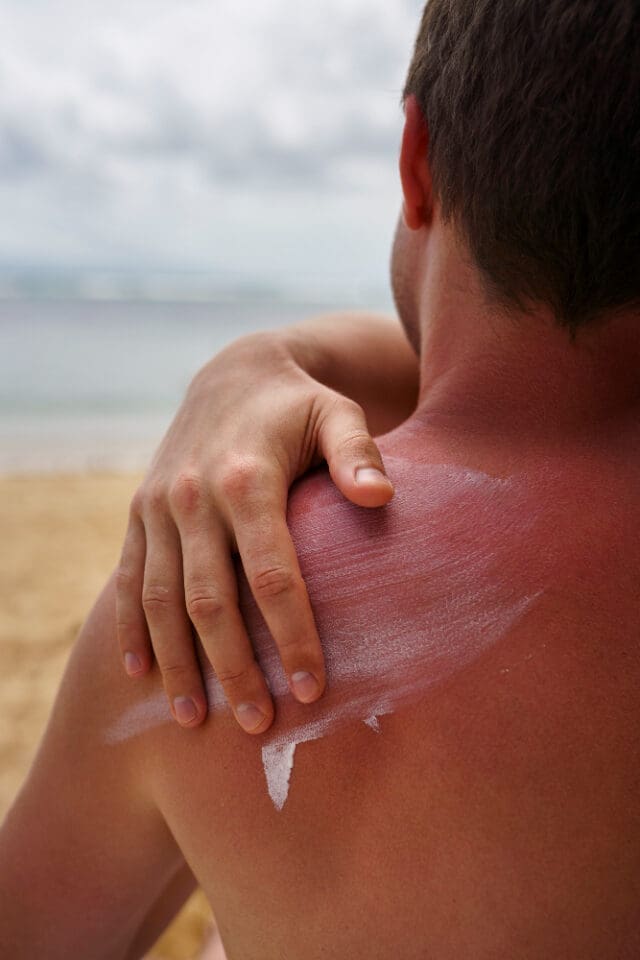Plastic surgeon Dr. Joel Aronowitz recently devoted a YouTube video to discussing sun damage to the skin, beginning with a famous photo in the New England Journal of Medicine who had severe damage to the skin of just one side of his face.
Presenting with a condition called unilateral dermatoheliosis, this unfortunate 69-year-old had normal skin on one side of his face and ridged, rough skin with large pores and nodules on the other. He had been exposed to the sun on the left side of his face for decades as a truck driver.
We can all see similar effects of the sun on our skin, Dr. Aronowitz says, although they may not be as dramatic. All you have to do is to look down at your chest when you step into the shower. The area just below your collar is exposed to the sun more than the rest of your chest, at least in most people, and has the most sun damage.
Sun Damage Isn’t Caused by Just UV Rays
We all know that the sun can damage our skin with UV (ultraviolet) radiation. What’s overlooked is that the sun doesn’t just generate UV radiation.
The sun generates a full spectrum of electromagnetic radiation. The spectrum of sunlight includes UV rays, x-rays, and cosmic rays. Most of the higher-energy radiation of the sun is filtered out by the atmosphere before it gets to us, but a small amount of extremely high radiation can fall on skin that is not protected from the sun.
Most sun damage. however, is caused by UV rays. You get more radiation:
- The closer you are to the equator. For instance, UV radiation is more intense in Phoenix than it is in Finland.
- The closer the calendar is to your summer solstice. In the Northern Hemisphere, that’s abut June 20. In southern South America, southern Africa, Australia, and New Zealand, that’s about December 20.
- In the middle of the day than in the early morning. You get only 20 percent as much UV radiation at 8 in the morning as you do between 11 a.m. and 3 p.m. (or 10 a.m. and 2 p.m., if your state does not observe daylight savings time).
You can minimize sun damage by using sunscreen. Any sunscreen you use should be broad-spectrum, protecting you against all the kinds of radiation in sunlight, and have an SPF (sun protection factor) of at least 15, preferably 30 or higher.
Moisturizing your skin also reduces sun damage.
What Your Doctor Can Do to Treat Sun-Damaged Skin
At the offices of Joel Aronowitz MD, there are several treatments for the worst symptoms of sun-damaged skin.
- Laser or intense pulsed light for skin pigmentation. The doctor uses a filter that limits the laser light to the same color as the dark spots on the skin. This way, the energy destroys the pigmented skin and not the normal skin around it.
- Chemical peels burn off pigmented skin so fresh, normally pigmented skin can regrow in its place. Only a doctor or an esthetician supervised by a doctor can do chemical peels safely.
- Fillers can smooth out wrinkles — as long as the doctor doesn’t overdo it.
Featured Image by freepik.com/




